Smithsonian exhibition ‘Futures' explores ‘mind-expanding possibilities’
‘Futures', the new exhibition at the Smithsonian-owned Arts + Industries Building in Washington, DC, explores opinions, possibilities, and opportunities
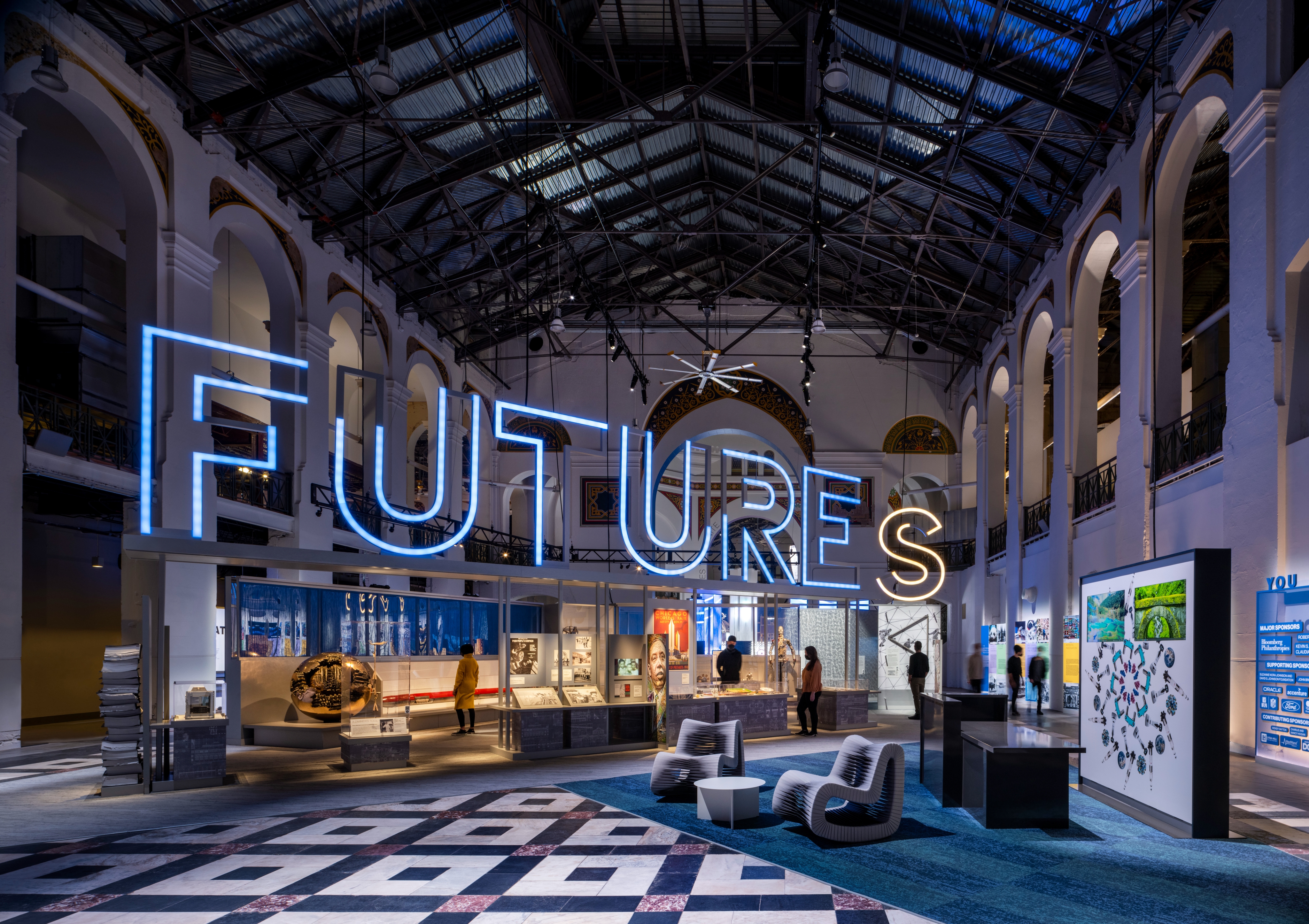
Ron Blunt - Photography
‘This is the last untapped public space on the national mall, which is where we collectively as a country decide to tell the stories that are important to us,' says Rachel Goslins, director of the Smithsonian-owned Arts + Industries Building, in Washington, DC, currently open for the first time in decades and soon to undergo a major renovation and permanent reopening.
She’s standing next to an interactive sculpture by Suchi Reddy of Reddymade Architecture and Design, called me + you, which transforms spoken language into a colour and light show that spreads along the installation’s LED elements. And she’s describing the impetus behind the recent opening of the show ‘Futures', featuring a collection of objects, artwork, ideas, and historical moments that begin to articulate collective opinions, possibilities, and opportunities.
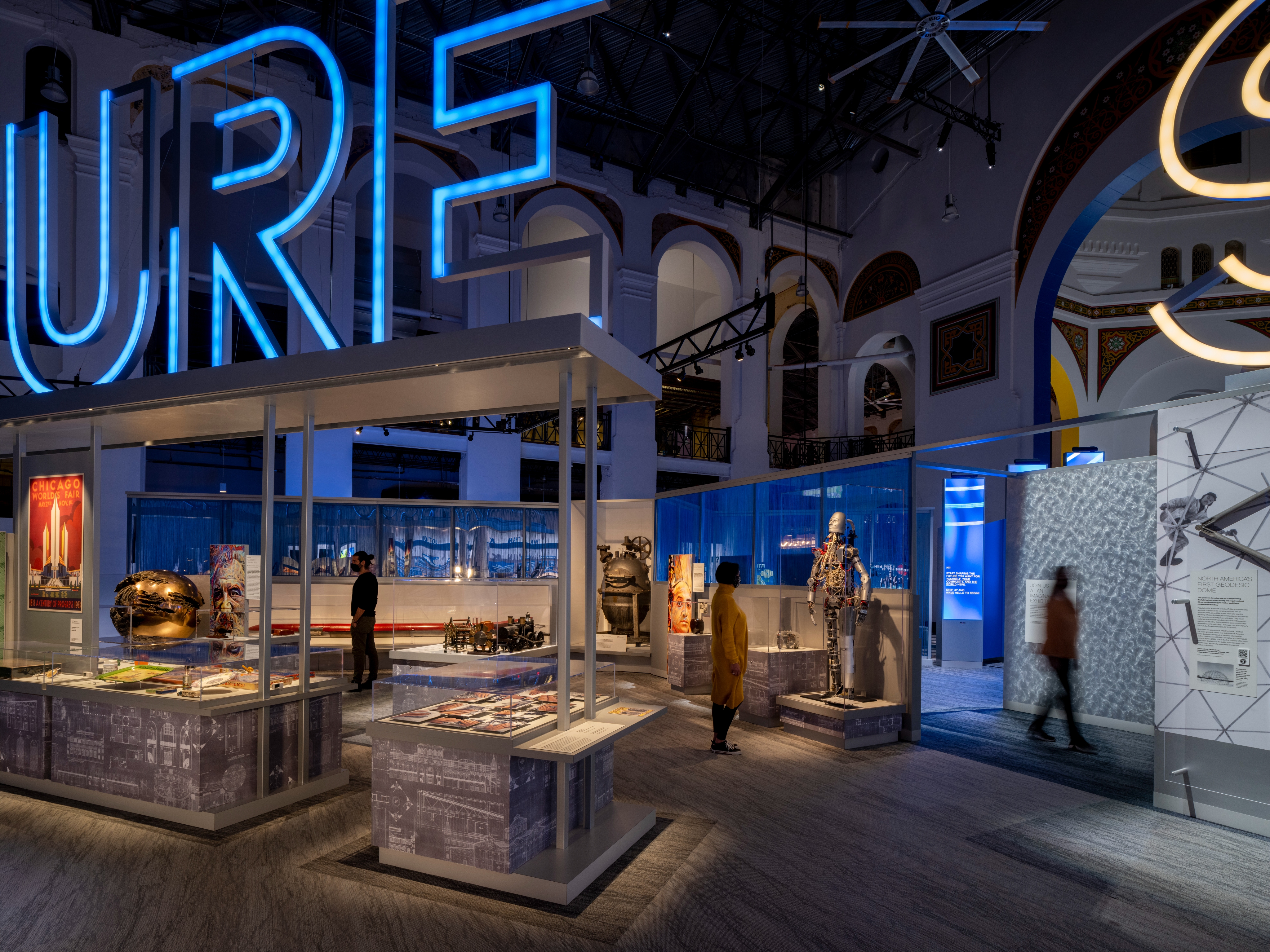
The show is part of the Smithsonian’s institution-wide 175th anniversary celebrations, and part of a longstanding effort to begin to find a permanent use for this cross-shaped structure. For the next year, four halls will exhibit pieces such as Australian artist Tega Brain’s Coin-Operated Wetland, which links working washing machines to a micro-ecosystem; an Isamu Noguchi-designed baby monitor made out of Bakelite (and installed next to a 1909 Bakelizer that produced the world’s first synthetic plastic); an AI-powered algae farm developed by Hypergiant Industries; and a genderless virtual voice called Q, produced by Copenhagen Pride, Equal AI, Koalition, Interactive, and Thirty Sounds Good.
What links the disparate projects together is an open attitude of ‘multiplicity', as curator-at-large Glenn Adamson says, woven together in sensitively rendered and ultimately optimistic exhibition design undertaken by David Rockwell and his firm Rockwell Group. ‘How do you take a set of values and ideas, respect the landmark status of the building, and start to create a language that would be a great armature for all these pieces?' Rockwell asks.
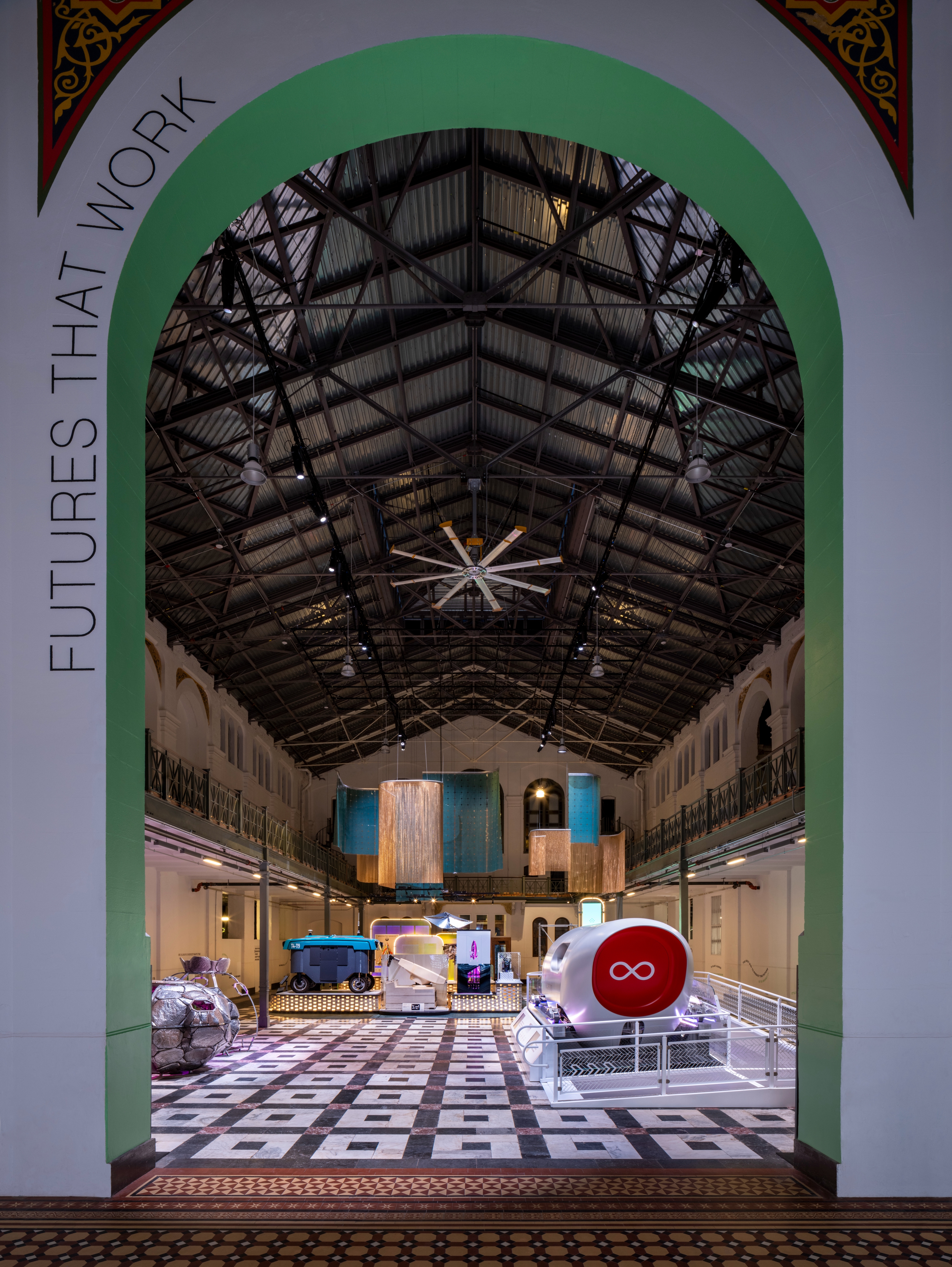
The answer is in a cohesive visual approach that marries Rockwell’s theatre-inflected approach to design, where pockets of intimacy and interactivity lead visitors through the halls and their four frames – Futures Past, Futures That Work, Futures That Unite, and Futures that Inspire – while offering moments of respite, pause, engagement, and more. Everything ties back to his interest in theatre as a moment in space and time that can change someone’s mind forever. ‘This fits into my lifelong investigation of things that are permanent versus things that are temporary – and the inverse relationship of things that might last an hour but stay with you the rest of your life,' says Rockwell.
Adamson hopes for exactly that. He points out how many children, historically, have visited the Smithsonian’s National Air and Space Museum and been inspired, 30 years later, to become working astronauts. ‘The future’s going to be decided by people who are kids right now,' he says. He hopes they come to ‘Futures', to see not information – which they can, of course, get on their phones – but ‘thought-provoking, mind-expanding possibilities'.
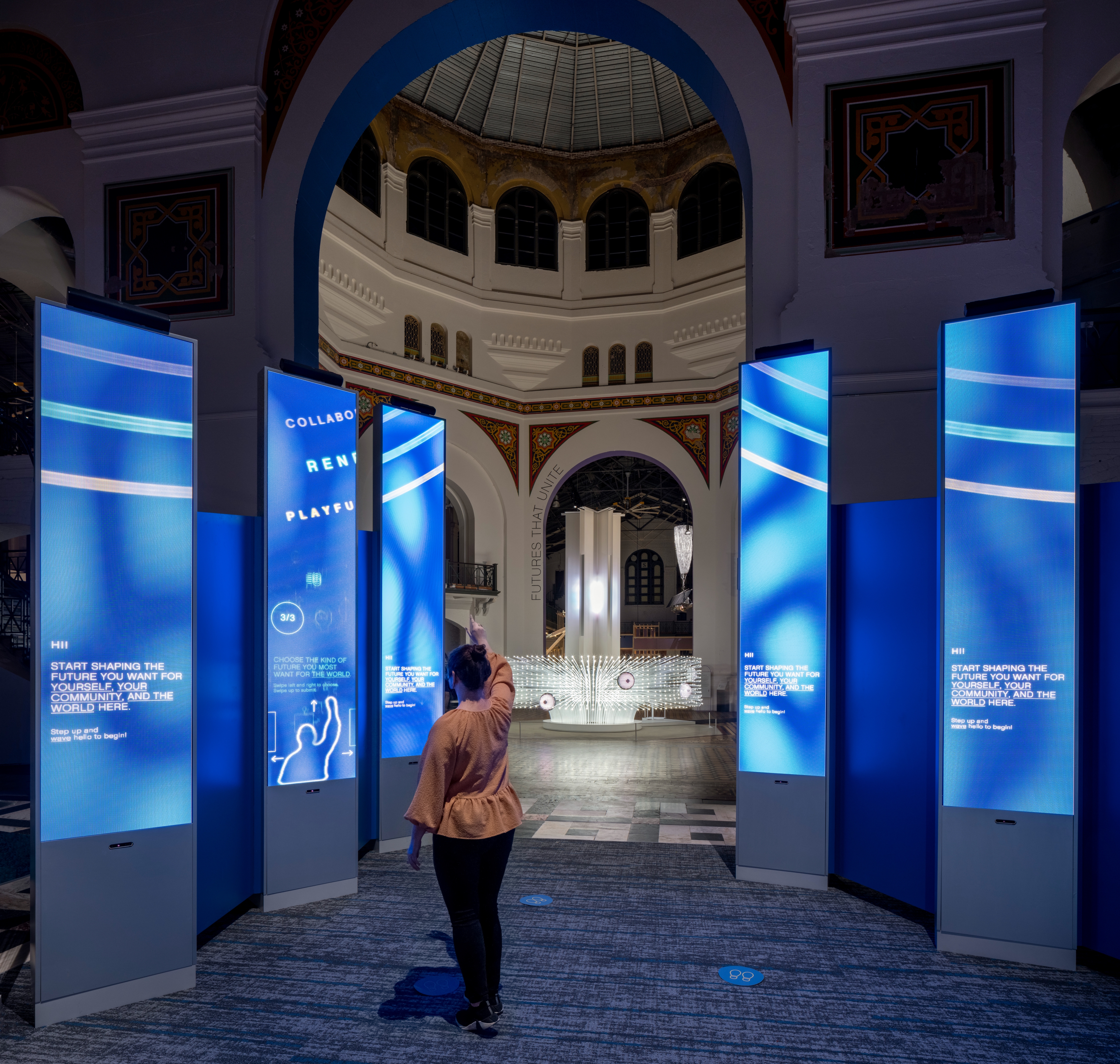
INFORMATION
‘Futures’, until 6 July 2022
Receive our daily digest of inspiration, escapism and design stories from around the world direct to your inbox.
-
 This cult Los Angeles pop-up restaurant now has a permanent address
This cult Los Angeles pop-up restaurant now has a permanent addressChef Brian Baik’s Corridor 109 makes its permanent debut in Melrose Hill. No surprise, it's now one of the hardest tables in town to book
-
 French bistro restaurant Maset channels the ease of the Mediterranean in London
French bistro restaurant Maset channels the ease of the Mediterranean in LondonThis Marylebone restaurant is shaped by the coastal flavours, materials and rhythms of southern France
-
 How ethical is Google Street View, asks Jon Rafman in Copenhagen
How ethical is Google Street View, asks Jon Rafman in CopenhagenIn 'Report a Concern - the Nine Eyes Archives' at Louisiana Museum of Art, Copenhagen, Jon Rafman considers technology's existential implications
-
 Step inside this resilient, river-facing cabin for a life with ‘less stuff’
Step inside this resilient, river-facing cabin for a life with ‘less stuff’A tough little cabin designed by architects Wittman Estes, with a big view of the Pacific Northwest's Wenatchee River, is the perfect cosy retreat
-
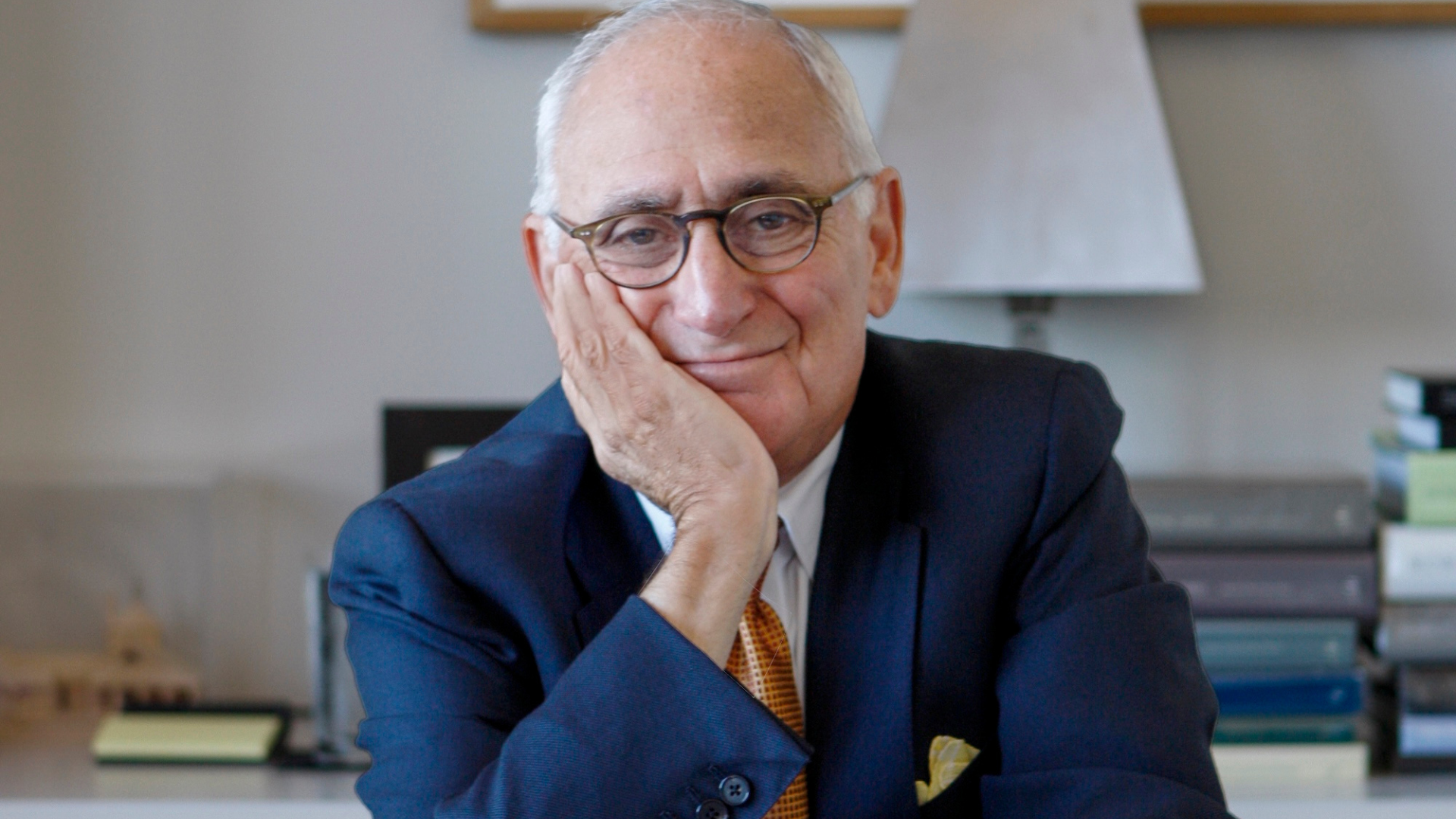 Remembering Robert A.M. Stern, an architect who discovered possibility in the past
Remembering Robert A.M. Stern, an architect who discovered possibility in the pastIt's easy to dismiss the late architect as a traditionalist. But Stern was, in fact, a design rebel whose buildings were as distinctly grand and buttoned-up as his chalk-striped suits
-
 Own an early John Lautner, perched in LA’s Echo Park hills
Own an early John Lautner, perched in LA’s Echo Park hillsThe restored and updated Jules Salkin Residence by John Lautner is a unique piece of Californian design heritage, an early private house by the Frank Lloyd Wright acolyte that points to his future iconic status
-
 The Stahl House – an icon of mid-century modernism – is for sale in Los Angeles
The Stahl House – an icon of mid-century modernism – is for sale in Los AngelesAfter 65 years in the hands of the same family, the home, also known as Case Study House #22, has been listed for $25 million
-
 Houston's Ismaili Centre is the most dazzling new building in America. Here's a look inside
Houston's Ismaili Centre is the most dazzling new building in America. Here's a look insideLondon-based architect Farshid Moussavi designed a new building open to all – and in the process, has created a gleaming new monument
-
 Frank Lloyd Wright’s Fountainhead will be opened to the public for the first time
Frank Lloyd Wright’s Fountainhead will be opened to the public for the first timeThe home, a defining example of the architect’s vision for American design, has been acquired by the Mississippi Museum of Art, which will open it to the public, giving visitors the chance to experience Frank Lloyd Wright’s genius firsthand
-
 Clad in terracotta, these new Williamsburg homes blend loft living and an organic feel
Clad in terracotta, these new Williamsburg homes blend loft living and an organic feelThe Williamsburg homes inside 103 Grand Street, designed by Brooklyn-based architects Of Possible, bring together elegant interiors and dramatic outdoor space in a slick, stacked volume
-
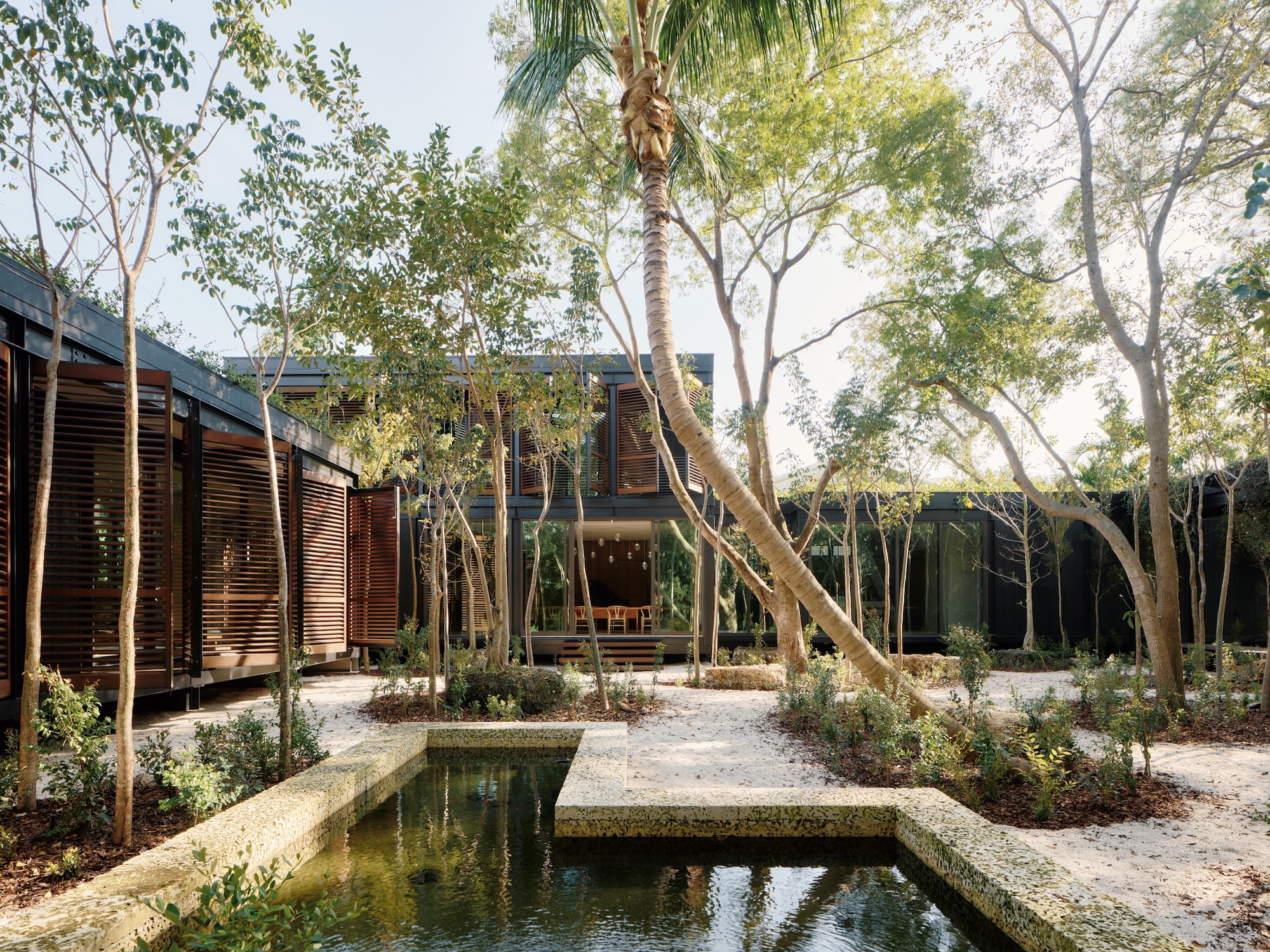 This ethereal Miami residence sprouted out of a wild, jungle-like garden
This ethereal Miami residence sprouted out of a wild, jungle-like gardenA Miami couple tapped local firm Brillhart Architecture to design them a house that merged Florida vernacular, Paul Rudolph and 'too many plants to count’